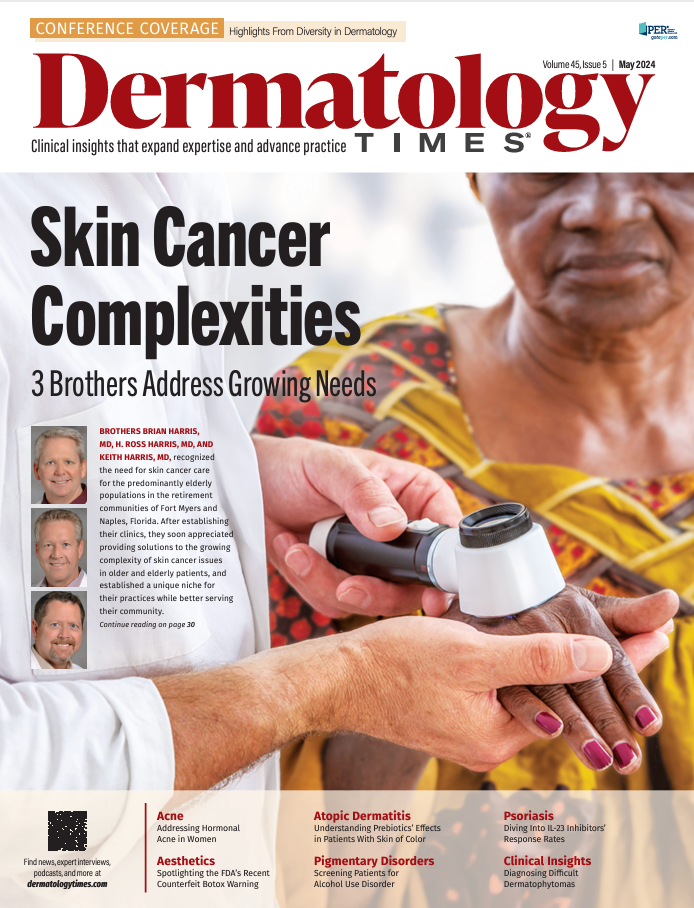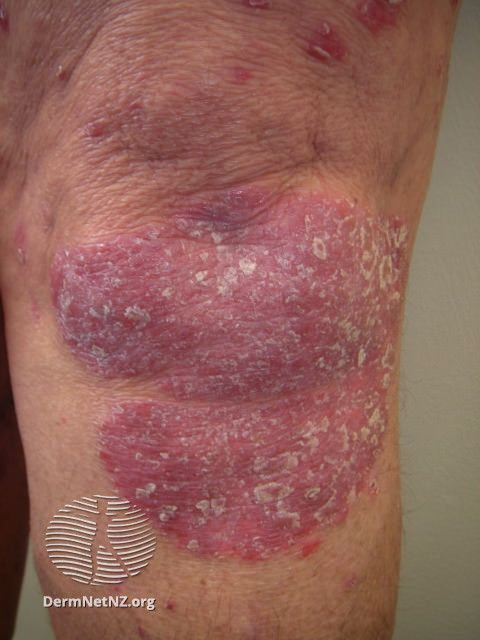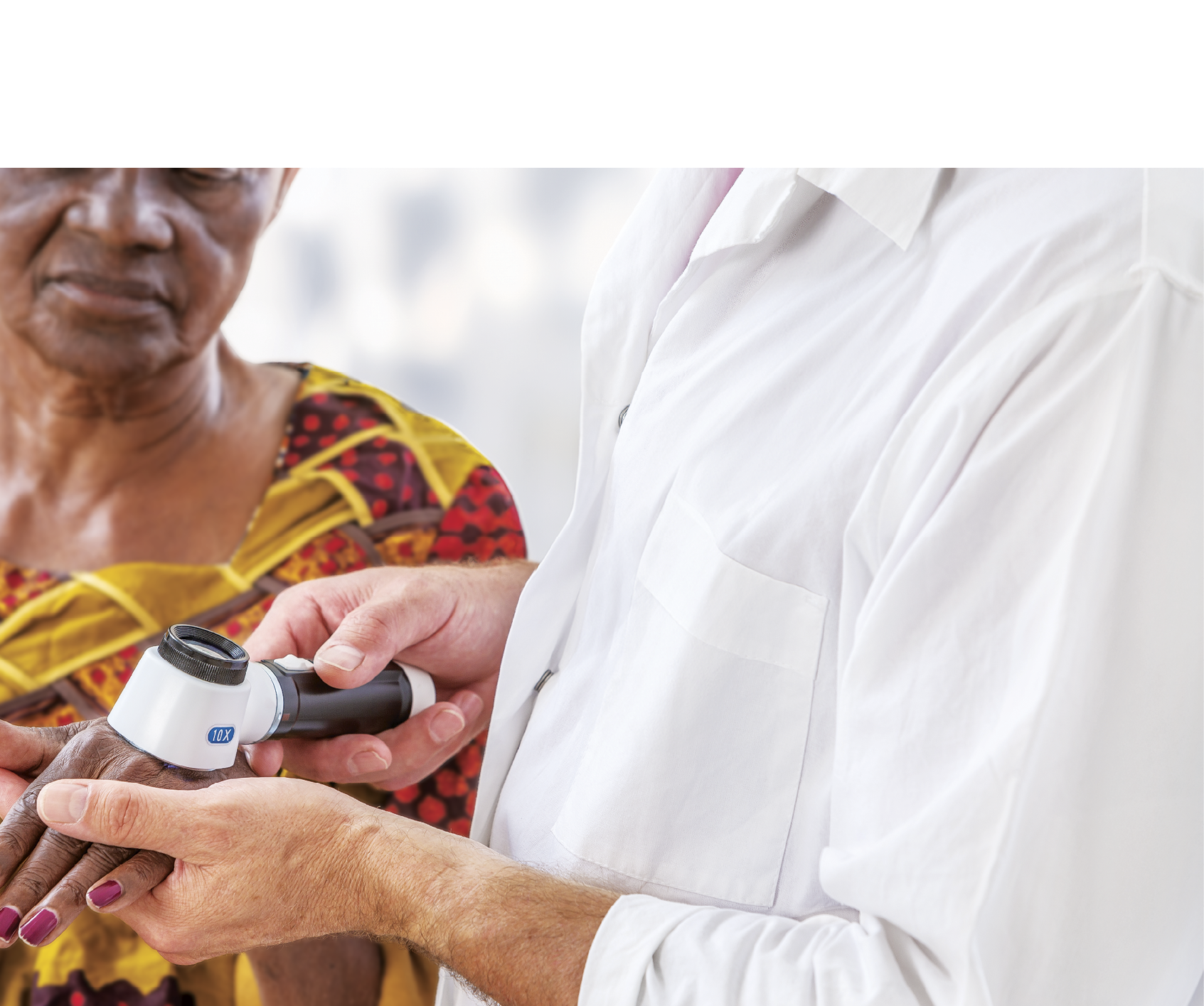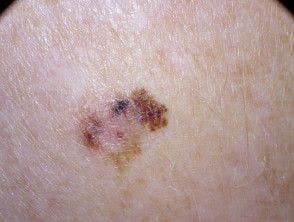- Acne
- Actinic Keratosis
- Aesthetics
- Alopecia
- Atopic Dermatitis
- Buy-and-Bill
- COVID-19
- Case-Based Roundtable
- Chronic Hand Eczema
- Chronic Spontaneous Urticaria
- Drug Watch
- Eczema
- General Dermatology
- Hidradenitis Suppurativa
- Melasma
- NP and PA
- Pediatric Dermatology
- Pigmentary Disorders
- Practice Management
- Precision Medicine and Biologics
- Prurigo Nodularis
- Psoriasis
- Psoriatic Arthritis
- Rare Disease
- Rosacea
- Skin Cancer
- Vitiligo
- Wound Care
Feature
Article
Dermatology Times
Surface Area of IL-23's Epitope Influences Short- and Long-Term Responses for IL-23 Inhibitors in Plaque Psoriasis
Author(s):
Risankizumab demonstrated the highest efficacy in PASI90 responses among analyzed IL-23 inhibitors.
A recent scientific investigation published in JID Innovations examined the structural composition of IL-23-binding epitopes to better understand how their molecular properties relate to the clinical efficacy of IL-23 inhibitors for the treatment of plaque psoriasis. Daniele et al investigated risankizumab, tildrakizumab, and guselkumab, which bind the IL-23 p19 subunit, as well as ustekinumab, which binds the IL-23 p40 subunit.1
The study was conducted in the research lab of Christopher Bunick, MD, PhD, associate professor of dermatology and translational biomedicine at Yale University School of Medicine in New Haven, Connecticut, and Dermatology Times’ Winter Editor in Chief.
“This was a very exciting study to perform because of its direct translational impact connecting science to the clinic. Having prescribed IL-23 biologics for years for patients with psoriasis, I needed to know how and why they were similar or different mechanistically. I thought this information could benefit providers and patients,” Bunick told Dermatology Times.
Overall, the study authors found that “each IL-23 inhibitor binds an epitope with a unique size, composition, and location except for a 10-residue overlap region outside of the IL-23 receptor epitope.” The data provides a molecular explanation for why risankizumab demonstrated the highest efficacy in PASI90 responses among IL-23 inhibitors studied by network meta-analysis.
Background
According to Daniele et al, the IL-23 cytokine is a heterodimer made of the p19 and p40 subunits, which bind IL-23 receptor (IL-23R) and IL12Rβ1 coreceptors to activate canonical IL-23 signaling. The study authors noted that p19 is unique to IL-23 and p40 is found in other cytokines, including IL-12.
Risankizumab, tildrakizumab, and guselkumab perform differently than ustekinumab due to their specific binding to p19, unlike ustekinumab’s binding to p40, which enables both anti-IL-23 and anti-IL-12 activity. “Through binding to these distinct subunits, the IL-23-targeted inhibitors and ustekinumab exert their therapeutic function by interrupting specific subunit/coreceptor interactions,” wrote Daniele et al.
Previous studies by the Bunick lab2 analyzed the binding sites and epitopes of TNF-α, IL-17, and IL-23 inhibitors to identify the molecular differences among the epitopes of different therapeutics in each biologic class; however, IL-23 analyses were limited to ustekinumab at the time due to a lack of data for other biologics. Daniele et al conducted their recent analysis to address the gap in knowledge of the structural mechanisms of action of the p19-specific IL-23 inhibitors in clinical use.
Methods
Daniele et al used epitope data from hydrogen-deuterium exchange studies for risankizumab, tildrakizumab, and guselkumab, and used crystallographic data for ustekinumab to map epitope locations, hydrophobicity, and surface charge onto the surface of the IL-23 crystal structure.
The molecular properties of each inhibitor epitope, including solvent-accessible surface area (SA), were correlated to binding affinity, kinetic values, and clinical efficacy scores for plaque psoriasis through linear regression analysis.
Composite short-term (10 to 16 weeks) and long-term (44 to 60 weeks) PASI90 response rate data were obtained from a network meta-analysis performed by Armstrong et al3, and inhibitor equilibrium dissociation constant (KD), dissociation rate constant (koff), and association rate constant (kon) were obtained from Zhou et al’s IL-23 antibodies comparative study.4
Results
Each biologic epitope and IL-23R-binding site were mapped onto the molecular surface of IL-23 to compare binding mechanisms. Risankizumab has the largest epitope SA, followed by guselkumab. Ustekinumab and tildrakizumab bind a much smaller epitope SA. Daniele et al determined that p19-specific inhibitor epitopes have different locations, as guselkumab had the most overlap with the IL-23R-binding site. Guselkumab overlaps with 58% of residues of the IL-23R epitope; risankizumab overlaps with 8% of residues; and tildrakizumab overlaps with 0% of residues.
“One region exists in the IL-23 p19 sequence where all 3 epitopes overlap: 10 residues from S114-Q123 (SLLPDSPVGQ). Importantly, this area does not overlap with the IL-23R-binding site, suggesting that steric effects—rather than direct competition for the receptor-binding site—are sufficient to disrupt IL-23R binding,” wrote the study authors.
Looking at chemical compositions, Daniele et al found that the IL-23 inhibitors’ epitopes had a greater hydrophobic character than the IL-23R-binding site (32% hydrophobic). Tildrakizumab had a 56% hydrophobic solvent accessible SA, while guselkumab, risankizumab, and ustekinumab had epitopes with greater than 50% non-hydrophobic residues. Regarding p19 epitopes, risankizumab was the only inhibitor with a strongly acidic surface charge. The p40 epitope of ustekinumab had a strongly acidic epitope.
When analyzing whether each inhibitor’s epitope SA correlated with its previously reported binding affinity and kinetic values, Daniele et al found an inverse relationship between epitope SA and an inhibitor’s KD, “indicating that increased epitope SA correlates with higher epitope-binding affinity.” Individual epitope SA was inversely correlated with an inhibitor’s koff, however, the same correlation was not found between epitope SA and kon, suggesting a larger SA creates more stable immune complexes with IL-23, which according to Bunick, those complexes do not like to separate (a lower “off” rate).
A 2020 meta-analysis comparing IL-23 inhibitor efficacy showed that risankizumab had the highest PASI90 response rates, followed by guselkumab and ustekinumab. Tildrakizumab had a lower PASI90 response rate after 10 to 16 weeks (short-term). Daniele et al compared the 2020 meta-analysis data with the structural properties of each inhibitor epitope identified in their analyses to better understand the connection between epitope structure and clinical response for IL-23 inhibitors.
Daniele et al found a significant correlation between epitope SA of each biologic and short-term PASI90 rates. With higher epitope SA, risankizumab and guselkumab had the higher short-term PASI90 response rates, while tildrakizumab with the smallest epitope SA had the lowest PASI90 response rates.
“Ustekinumab fits within this trend, indicating that ustekinumab’s dual IL-12/IL-23 inhibition may not cause it to behave differently from the targeted IL-23 inhibitors in the short-term; rather, its initial efficacy may be due to the size of its epitope SA,” wrote Daniele et al. The study authors also found that increased binding affinity translated to higher PASI90 response rates, and koff was strongly correlated with PASI90 rates compared to kon, “indicating that slower dissociation of biologic-IL-23 complex leads to more effective treatment of plaque psoriasis.”
While analyzing whether IL-23 inhibitor epitope SA, KD, and koff correlated with long-term PASI90 responses, Daniele et al found a strong correlation between epitope SA of each biologic and long-term (44 to 60 weeks) PASI90 rates. Inhibitor KD and koff were also associated with long-term PASI90 rates. There was no statistically significant relationship found between PASI90 rates and kon.
Key Takeaways
Based on their findings, Daniele et al determined that molecular differences between p19-specific psoriasis biologics directly relate to patient outcomes. The strong correlations found between inhibitor epitope SA, binding affinity, dissociation kinetics, and PASI90 response rates show how biochemical and molecular data are needed to explain clinical observations, according to the study authors.
“Our analyses suggest that the size/SA of the IL-23 inhibitor epitope is an important structural parameter in defining and explaining both short- and long-term therapeutic response for IL-23 biologics in plaque psoriasis treatment, more than total residue hydrophobicity, polarity, or charge content... Our data ultimately indicate that epitope SA has a major influence on stable drug-target complex formation and preventing biologic-IL-23 dissociation, which mitigates aberrant IL-23 signaling central to psoriasis pathophysiology,” wrote Daniele et al.
Based on their analyses, the study authors stated that their work increases the molecular understanding of IL-23 inhibitors by characterizing and differentiating the chemistry and structure of binding epitopes. Their data also confirms that direct IL-23 inhibitor epitope overlap with the IL-23R epitope is not needed for clinical efficacy due to risankizumab’s and tildrakizumab’s clinically meaningful PASI90 response rates, even with low epitope overlap with IL-23R.
Considering other biologic classes, “Our findings regarding the relationship between epitope size/SA, koff, and clinical efficacy in plaque psoriasis are not unique to IL-23 inhibitors but instead appear to be shared with other biologic classes such as the IL-17 inhibitors: ixekizumab (IXE) and secukinumab (SEC). As reported by Warren et al, a greater proportion of patients with moderate-to-severe plaque psoriasis achieved PASI90 and PASI100 within 12 weeks of therapy with IXE in contrast to therapy with SEC as demonstrated by indirect comparison,” wrote Daniele et al.
Daniele et al’s findings of the relationship between the structural properties of IL-23 inhibitor epitopes and clinical efficacy provide clinicians with molecular rationale for therapeutic selection, according to the study authors. Their analysis shows that each p19-specific therapeutic is molecularly distinct, suggesting that a lack of clinical response in one IL-23 inhibitor does not mean that the others will not demonstrate a clinical response.
“Future studies aggregating both short-term and long-term data for all IL-23 biologics in the treatment of plaque psoriasis will be necessary to provide a more complete understanding of the structural properties of inhibitor epitopes and their clinical responses,” concluded Daniele et al.
References
- Daniele SG, Eldirany SA, Damiani G, Ho M, Bunick CG. Structural basis for p19 targeting by anti-IL-23 biologics: correlations with short- and long-term efficacy in psoriasis. JID Innov. 2024;4(2):100261. Published 2024 Jan 20. doi:10.1016/j.xjidi.2024.100261
- Eldirany SA, Ho M, Bunick CG. Structural basis for how biologic medicines bind their targets in psoriasis therapy. Yale J Biol Med. 2020 Mar 27;93(1):19-27.
- Armstrong AW, Puig L, Joshi A, et al. Comparison of biologics and oral treatments for plaque psoriasis: a meta-analysis. JAMA Dermatol. 2020;156(3):258-269. doi:10.1001/jamadermatol.2019.4029
- Zhou L, Wang Y, Wan Q, et al. A non-clinical comparative study of IL-23 antibodies in psoriasis. MAbs. 2021;13(1):1964420. doi:10.1080/19420862.2021.1964420

Newsletter
Like what you’re reading? Subscribe to Dermatology Times for weekly updates on therapies, innovations, and real-world practice tips.























